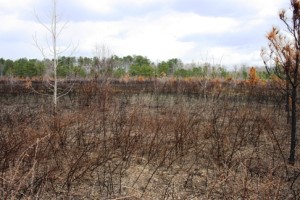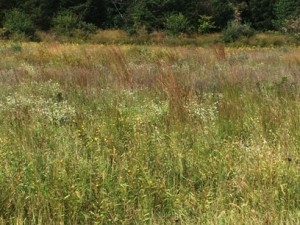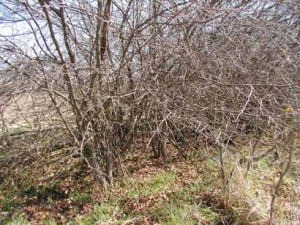Frank Beamer, who just retired after 29 years, became the Virginia Tech football coach the year I exited my all-expenses-paid, 4-year tour with the U.S. Army. In the Army one is often asked “Where are you from?” I became accustomed to saying in my mountain drawl at that time “Southwest Virginia.” To which many would say “You mean southern West Virginia?”
A back and forth would ensue and I’d say, “No, Virginia, near Blacksburg.” To which the response most often was “Blacksburg, where the heck (more dramatic words generally used by Army personnel not suitable for this blog) is that? To which I’d reply, “in Southwest Virginia.” And on and on. To say we were not well known is an understatement along the lines of saying this year’s election atmosphere is slightly abnormal.
Frank is a native southwest Virginian, one of whose goals must have included putting us on the map because that’s what he did, in addition to many other things. Mr. Beamer demonstrated every aspect of the word “character.” Humble to a fault, but every bit confident, Mr. Beamer showed the country that small town values and high school football loyalty and closeness could be successful in the “big leagues.”
For 29 years and through emotions ranging from a heartbreaking loss in a national championship game to the highs of beating a state rival routinely, Frank did us proud. Never gloating and never sulking he went about his business with determination and enthusiasm every day. He taught so many players valuable football lessons, but, more importantly, life lessons as well. Since this is a blog about quail, let’s take a look at how some of his lessons apply to quail management. Let’s play “Beamerball* with Bobwhites.”
1) Make good use of the off-season: Recruitment is everything in football, and if you don’t win the recruiting battles, you won’t win much else.
Application to quail management: Recruitment of baby quail is the key to annual population recovery. If you don’t have lots of first and second year weedy fields, you won’t recruit many new quail, and you won’t find many come fall. For those of you who don’t have a team in the big game next Monday night, the off-season is now until about mid-March. And you recruit quail by conducting prescribed fire or rotational disking between now and then.

About 1/3 of your habitat should be in first or second year disturbed areas consisting of ragweed, beggar-weed, partridge pea and a few clumps of native grasses – what we call brood-rearing cover (which doubles as winter feeding cover). If you don’t find some bare dirt under a canopy of weeds on a substantial portion of your property, your quail management program will be in a downhill slide until you get your recruiting in order. The second part of the recruiting game for quail is nesting cover. Nesting cover is brood-rearing cover with a little more grass – a weedy field that has been allowed to grow a bit longer between burns or diskings. About how much? Well…about 33%, or one-third. Beginning to sound familiar, eh?

2) A great defense is what wins the tough games: Well…what is there to be said here other than by hiring Bud Foster and his defensive genius, the “Lunch Pail Defense” was established as one of the best in college football.
Application to quail management: Without good “defensive cover” in the form of thickets, your quail won’t make it through the winter. This is the cover that gets them through the “tough games.” Think of a thicket like that football safety that intercepts a pass when the opposing team is in the red zone. About a third of your cover should consist of thickets of wild plum, indigo bush, sumac, hawthorn, blackberry, green brier, VA-70 or bi-color lespedeza, or some mix of these. Repeatedly, in many different parts of the bobwhite’s range studies show that quail don’t like to be more than 30 – 40 yards from thickets. The thickets don’t have to be huge, 30 by 50 feet is plenty in most cases, but they should be well distributed throughout the property.
And quail don’t need “umbrella brush.” They need thickets that have stem density at ground level. Some shrubs tend to grow like an umbrella, with one stem at ground level that does not branch out until several feet above ground. This creates a tunnel at ground level that predators can maneuver through easily.

If you ever get a chance, compare a native clump of wild plum to a row or two of planted non-native Autumn Olive and you’ll see what I mean. You’ll have to get down on your hands and knees and get some dirt on your pants to take a look and truly understand this concept. When planting shrubs of any kind for quail, make sure and plant them close together but staggered, and avoid creating “tunnels of death” for bobwhites.
3) Focus on the basics: From time to time there will be a flashy “new” college football program that finds a niche in piling up points and developing a playbook about five chapters too long. You’ll notice them for a while, then they’ll fall off the charts faster than a “one hit wonder” country singer. Flash is useless unless you have the basics down cold.
Application to quail management: You will see a lot of fancy seed mixes, new quail stocking techniques guaranteed to work, new brands of larger pen-raised quail (in Colonel Sander’s language – “a family fill-up” for a predator) with the promise of being more “hardy” and other such “snake oil.” It’s OK to try new things. Some supplementation with food plots, or seeding to increase low native plant diversity may be needed, and some use of released quail to supplement and encourage quail hunting is fine, but the backbone of wild quail recovery should be the habitat basics.
4) Don’t overlook things that might at first seem unimportant: Frank Beamer’s brand of football came to be known as “Beamerball” in part because of his focus on special teams, something some programs may overlook at times. He realized that special teams are part of the basics. A blocked punt here, a snubbed kick there, a punt returned for a score…these things win close games.

Application to quail management: Be honest with yourself about all aspects of your management program. Have you done your special teams work? Did you spot spray those thickets where taller trees were beginning to take over? Did you renovate those thickets where fescue was creeping back in? Do you really have enough bare dirt under your field vegetation? Can you really do without that hedgerow out in the field?
In a nutshell: Good quail defense equals great thicket cover, good quail offense equals lots of brood –rearing and nesting cover, and quail special teams equals paying attention to detail. I’ll end by simply saying “Thank you, Frank Beamer, for showing the whole country what a humble but confident and determined ‘mountain boy’ from Southwest Virginia can accomplish with enthusiasm, loyalty and dedication to teamwork.”
And for those of us from Southwest Virginia, thanks for saving us a lot time in having to explain that anymore.
*Beamerball
During Beamer’s tenure at Virginia Tech, putting points on the scoreboard became a full team effort with the offensive, defensive and special teams units. Often when the team scores one or more non-offensive touchdowns, the style of play is described as “Beamerball.” Since Beamer’s first season in 1987, a player at every position on the defensive unit has scored at least one touchdown, and 35 different players have scored touchdowns on Virginia Tech’s special teams.
–Wikipedia
For more information about Frank, visit these locations on the web:
https://en.wikipedia.org/wiki/Frank_Beamer
http://www.hokiesports.com/staff/beamer.html
January 6, 2016




